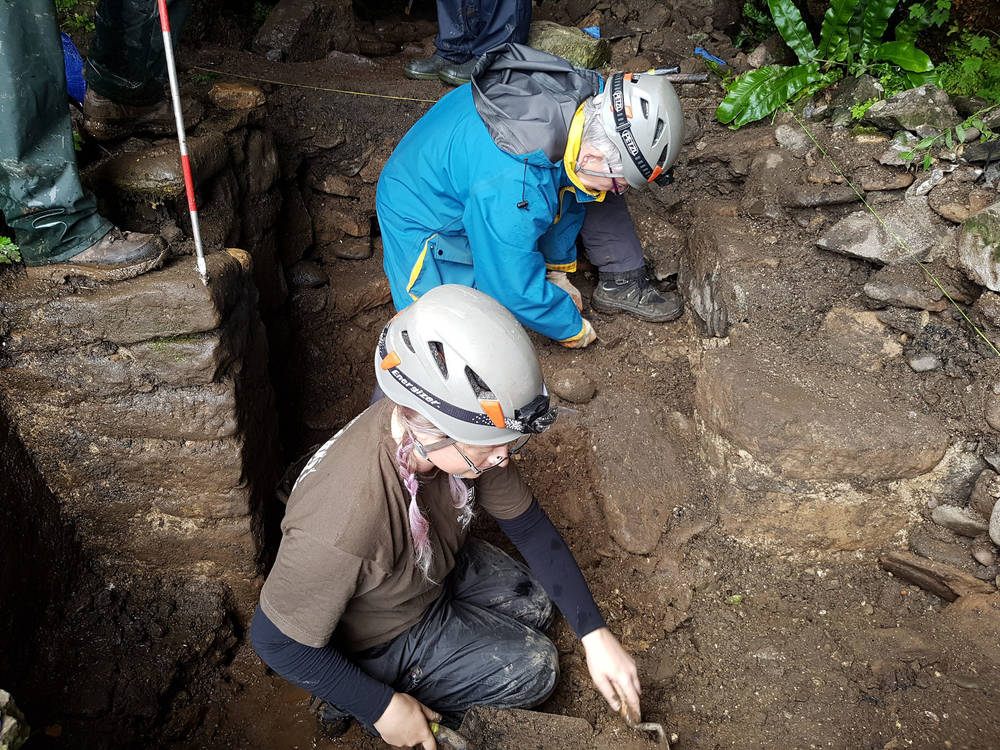Found: A Secret Doorway to Caves Hidden Under a Castle
Archaeologists also discovered wine bottles in the caves.

Since the late 18th century, Culzean Castle has stood in its current form on the west coast of Scotland, less than 50 miles southwest of Glasgow. But the caves in the dramatic cliffs below the castle have been there for much, much longer. Recently, a team of volunteer archaeologists investigated the entrance of the Stables Cave and discovered a forgotten doorway, built hundreds of years ago to control access to the cave’s entrance.
Legends surround these caves—it’s said that they’re haunted, that they were used by smugglers, that fugitives hid here. The archaeology team also found wine bottles dating back to the 18th century, and it’s fun to imagine smugglers swigging down some booze while spending the day or night in the shelter of the caves.

But it’s just as likely the bottles have a more mundane story behind them. Before the current castle was built, Smithsonian notes, there was a castle here called House of Cove or Coif Castle, a nod to the caves below, and as early as the 14th century, there was a stone tower here. For many years, the caves were used as cellars, for provisions including wine.
Human use of the caves goes back even further—dating a charcoal sample from a different cave below the castle, the National Trust of Scotland says, shows evidence of human occupation in the Iron Age, somewhere between the years 135 and 325.

The most exciting discovery of the volunteer group, though, was the door, which was buried about three feet deep. They discovered two sides of the doorway, with stones stacked eight layers high, framing a space about 3.6 feet across. It could have “been secured with a draw bar,” according to the National Trust. If you have access to a good cave—all the more reason to keep other people out.

















Follow us on Twitter to get the latest on the world's hidden wonders.
Like us on Facebook to get the latest on the world's hidden wonders.
Follow us on Twitter Like us on Facebook